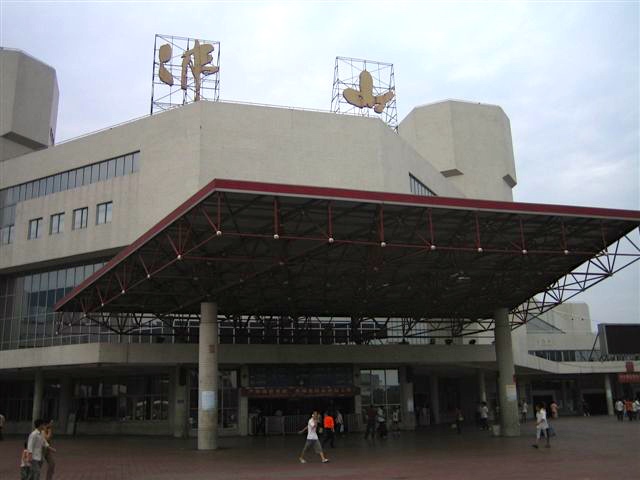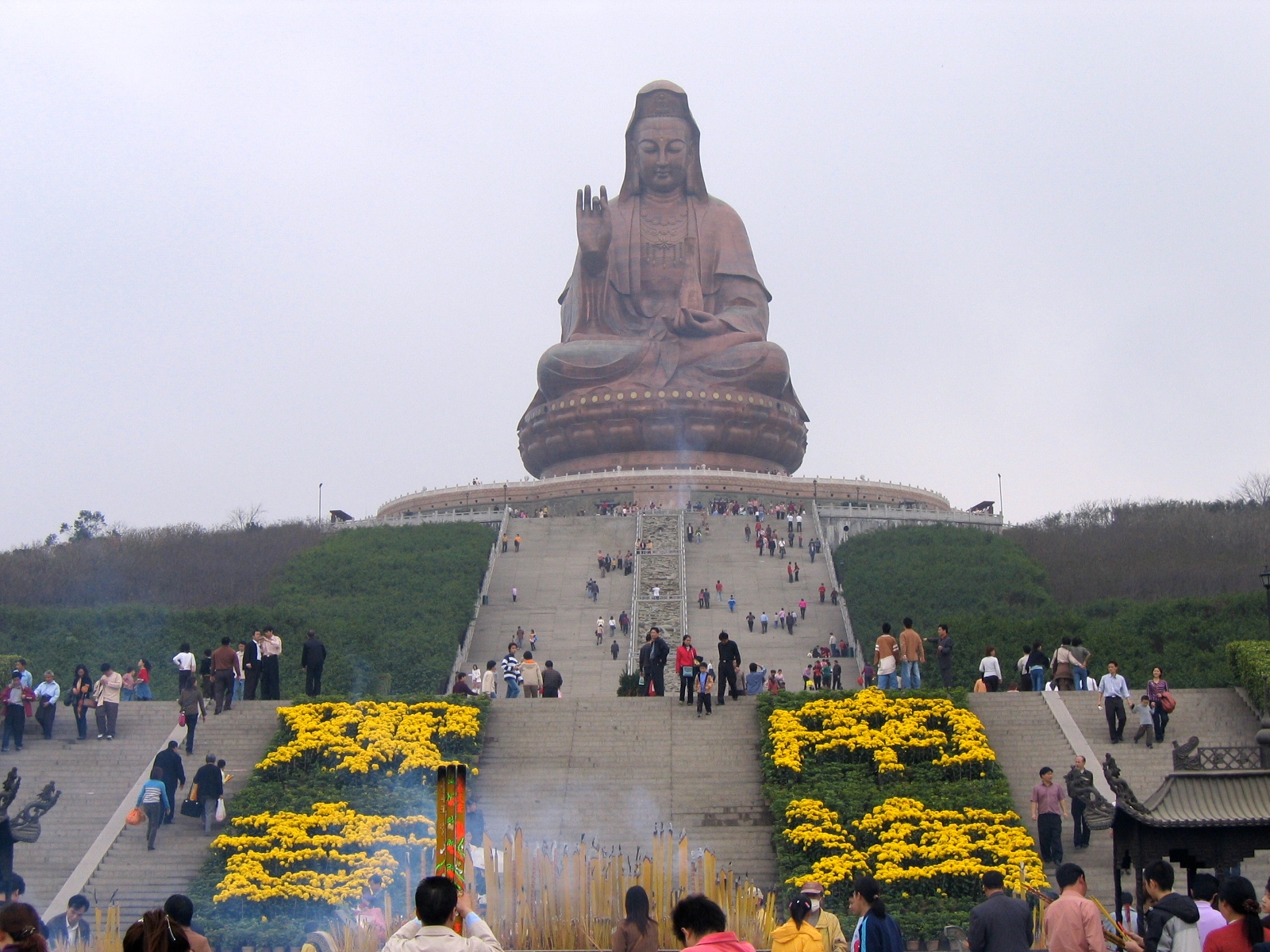|
Xunfenggang Station
Xunfenggang Station () is an elevated terminus of Guangzhou Metro The Guangzhou Metro () ( and ) is the rapid transit system of the city of Guangzhou in Guangdong Province of China. It is operated by the state-owned Guangzhou Metro Corporation and was the fourth metro system to be built in mainland China, af ... Line 6. It start operations on December 28, 2013. It is located at the south of Xunfenggang (), A1 Road, Jinshazhou, Baiyun District. Since the terminus approaches near Lishui, Nanhai District, Foshan over Xunfenggang, many residents suggested extending Guangzhou Metro from Xunfenggang to Lishui. Guangzhou authorities are considering the suggestion. Station layout Exits References Guangzhou Metro stations in Baiyun District Railway stations in China opened in 2013 {{Guangdong-railstation-stub ... [...More Info...] [...Related Items...] OR: [Wikipedia] [Google] [Baidu] |
Jinshazhou
Jinshazhou () is an island between Guangzhou and Foshan in Guangdong, China. It covers the total area of about 27 square kilometres. Touted as the metropolis of Guangzhou and Foshan, Jinshazhou is located in northwest Guangzhou, with Baisha River on its east, and Lishui (), Zhoucun (), Baishacun () of Nanhai District, Foshan Foshan (, ), alternately romanized as Fatshan, is a prefecture-level city in central Guangdong Province, China. The entire prefecture covers and had a population of 9,498,863 as of the 2020 census. The city is part of the western side of the ... on its north, west and south. The island is administrated by both Baiyun District of Guangzhou and Huangqi () and Lishui of Nanhai District, Foshan. Its western part which belongs to Guangzhou occupies about 1/3 of its total area (i.e. about 9 square kilometres). [...More Info...] [...Related Items...] OR: [Wikipedia] [Google] [Baidu] |
Line 6, Guangzhou Metro
Line 6 of the Guangzhou Metro runs from Liwan District to Huangpu District. It starts at and ends at , interchanging with Line 5 at and ; Line 1 at and ; Line 8 at ; Line 2 at ; Line 21 at ; Line 3 at and . The total length is with 32 stations. Line 6 serves densely populated areas including residential communities in Jinshazhou, the pedestrian street in Beijing Lu and wholesale markets in Shahe. Nevertheless, Line 6, which runs four-car trains, has long had a questionable train capacity. The phase one section between and began to provide service from 28 December 2013 with the exception of and stations. opened over a year later on 28 January 2015. The second phase of Line 6 from to has been in operation since 28 December 2016. Like Lines 4 and 5, Line 6 is equipped with linear induction motor technology. Line 6's color is . Opening timeline Station listing * OSI - Out-of-station interchange (only available for IC cards users) Overcrowding Originally ... [...More Info...] [...Related Items...] OR: [Wikipedia] [Google] [Baidu] |
Island Platform
An island platform (also center platform, centre platform) is a station layout arrangement where a single platform is positioned between two tracks within a railway station, tram stop or transitway interchange. Island platforms are popular on twin-track routes due to pragmatic and cost reasons. They are also useful within larger stations where local and express services for the same direction of travel can be provided from opposite sides of the same platform thereby simplifying transfers between the two tracks. An alternative arrangement is to position side platforms on either side of the tracks. The historical use of island platforms depends greatly upon the location. In the United Kingdom the use of island platforms is relatively common when the railway line is in a cutting or raised on an embankment, as this makes it easier to provide access to the platform without walking across the tracks. Advantages and tradeoffs Island platforms are necessary for any station with many th ... [...More Info...] [...Related Items...] OR: [Wikipedia] [Google] [Baidu] |
Xiangxue Station
Xiangxue station (), is a station and the current terminus of Line 6 of the Guangzhou Metro The Guangzhou Metro () ( and ) is the rapid transit system of the city of Guangzhou in Guangdong Province of China. It is operated by the state-owned Guangzhou Metro Corporation and was the fourth metro system to be built in mainland China, af .... It started operations on 28 December 2016. Station layout Exits References {{coord, 23.172382, 113.501224, type:railwaystation_region:CN-44_source:Gaode, display=title Railway stations in China opened in 2016 Guangzhou Metro stations in Huangpu District ... [...More Info...] [...Related Items...] OR: [Wikipedia] [Google] [Baidu] |
Side Platform
A side platform (also known as a marginal platform or a single-face platform) is a platform positioned to the side of one or more railway tracks or guideways at a railway station, tram stop, or transitway. A station having dual side platforms, one for each direction of travel, is the basic design used for double-track railway lines (as opposed to, for instance, the island platform where a single platform lies between the tracks). Side platforms may result in a wider overall footprint for the station compared with an island platform where a single width of platform can be shared by riders using either track. In some stations, the two side platforms are connected by a footbridge running above and over the tracks. While a pair of side platforms is often provided on a dual-track line, a single side platform is usually sufficient for a single-track line. Layout Where the station is close to a level crossing (grade crossing) the platforms may either be on the same side of the cross ... [...More Info...] [...Related Items...] OR: [Wikipedia] [Google] [Baidu] |
Foshan
Foshan (, ), alternately romanized as Fatshan, is a prefecture-level city in central Guangdong Province, China. The entire prefecture covers and had a population of 9,498,863 as of the 2020 census. The city is part of the western side of the Pearl River Delta Economic Zone whose built-up (or metro) area was home to 65,694,622 inhabitants as of 2020 (excluding Hong Kong not conurbated yet), making it the biggest urban area of the world. Foshan is regarded as the home of Cantonese opera, a genre of Chinese opera; Nanquan, a martial art; and lion dancing. Name ''Fóshān'' is the pinyin romanization of the city's Chinese name , based on its Mandarin pronunciation. The Postal Map spelling "Fatshan" derives from the same name's local Cantonese pronunciation. Other romanizations include Fat-shan and Fat-shun. Foshan means "BuddhaMountain" and, despite the more famous present-day statue of Guanyin (or Kwanyin) on Mount Xiqiao, who isn't a Buddha, it refers to a smaller hill n ... [...More Info...] [...Related Items...] OR: [Wikipedia] [Google] [Baidu] |
Nanhai District
Nanhai District (), is a District (PRC and ROC), district of Foshan, Guangdong, China. Its government is the first to have developed e-government informatization at the county level in China. History Establishment of Nanhai is traditionally attributed two brothers carrying their father's bowls in 1271. They were fleeing south from the Mongols on a bamboo raft when a violent storm shipwrecked them and broke all the bowls. The brothers settled down there and the position of the wreck is commemorated by a shrine. This area was named Broken Bowls Point. On 15 February 1921, the eastern part of Nanhai County was ceded to the newly established City of Guangzhou which became part of what is now western part of Liwan District, Liwan. On 26 June 1951, Foshan Town (present Chancheng District, Chancheng) was ceded to the newly established City of Foshan. Nanhai County was upgraded into a county-level city on 2 September 1992 until 8 December 2002 Nanhai was consolidated as a district of F ... [...More Info...] [...Related Items...] OR: [Wikipedia] [Google] [Baidu] |
Guangzhou Metro
The Guangzhou Metro () ( and ) is the rapid transit system of the city of Guangzhou in Guangdong Province of China. It is operated by the state-owned Guangzhou Metro Corporation and was the fourth metro system to be built in mainland China, after those of Beijing, Tianjin, and Shanghai. The earliest efforts to build an underground rapid transit system in Guangzhou date back to 1960. In the two decades that followed, the project was brought into the agenda five times but ended up abandoned each time due to financial and technical difficulties. Preparation of what would lead to today's Guangzhou Metro did not start until the 1980s, and it was not until 1993 that construction of the first line, Line 1, officially began. Line 1 opened four years later in 1997 with five stations in operation. , Guangzhou Metro has 16 lines in operation, namely: Line 1, Line 2, Line 3, Line 4, Line 5, Line 6, Line 7, Line 8, Line 9, Line 13, Li ... [...More Info...] [...Related Items...] OR: [Wikipedia] [Google] [Baidu] |
Baiyun District, Guangzhou
Baiyun District is one of 11 urban districts of the prefecture-level city of Guangzhou, the capital of Guangdong Province, China. The district is located in the city's northern suburbs, and is named after the Baiyun Mountain (the "White Cloud Mountain"), one of the area's natural attractions. Administrative divisions There are currently 18 subdistricts and 4 towns. On 19 December 2013 four new subdistricts (Yuncheng, Helong, Baiyunhu, & Shimen) were established from carving out of existing subdistricts. History Nowadays Baiyun District was originally governed by Panyu County (now Panyu District) and Nanhai County (now Nanhai District). However, since 1924, the district changed its name as new suburb of Guangzhou (Canton) city. in June 1954, Baiyun District was formally established. Economy For many years, Guangzhou's main airport, the (Former) Guangzhou Baiyun International Airport was located within Baiyun District. In 2004, the airport was relocated farther north fr ... [...More Info...] [...Related Items...] OR: [Wikipedia] [Google] [Baidu] |
Train Station
A train station, railway station, railroad station or depot is a railway facility where trains stop to load or unload passengers, freight or both. It generally consists of at least one platform, one track and a station building providing such ancillary services as ticket sales, waiting rooms and baggage/freight service. If a station is on a single-track line, it often has a passing loop to facilitate traffic movements. Places at which passengers only occasionally board or leave a train, sometimes consisting of a short platform and a waiting shed but sometimes indicated by no more than a sign, are variously referred to as "stops", "flag stops", " halts", or "provisional stopping places". The stations themselves may be at ground level, underground or elevated. Connections may be available to intersecting rail lines or other transport modes such as buses, trams or other rapid transit systems. Terminology In British English, traditional terminology favours ''railway station' ... [...More Info...] [...Related Items...] OR: [Wikipedia] [Google] [Baidu] |
Elevated Railway
An elevated railway or elevated train (also known as an el train for short) is a rapid transit railway with the tracks above street level on a viaduct or other elevated structure (usually constructed from steel, cast iron, concrete, or bricks). The railway may be broad-gauge, standard-gauge or narrow-gauge railway, light rail, monorail, or a suspension railway. Elevated railways are normally found in urban areas where there would otherwise be multiple level crossings. Usually, the tracks of elevated railways that run on steel viaducts can be seen from street level. History The earliest elevated railway was the London and Greenwich Railway on a brick viaduct of 878 arches, built between 1836 and 1838. The first of the London and Blackwall Railway (1840) was also built on a viaduct. During the 1840s there were other plans for elevated railways in London that never came to fruition. From the late 1860s onward, elevated railways became popular in US cities. The New York West ... [...More Info...] [...Related Items...] OR: [Wikipedia] [Google] [Baidu] |




.jpg)
.jpg)
